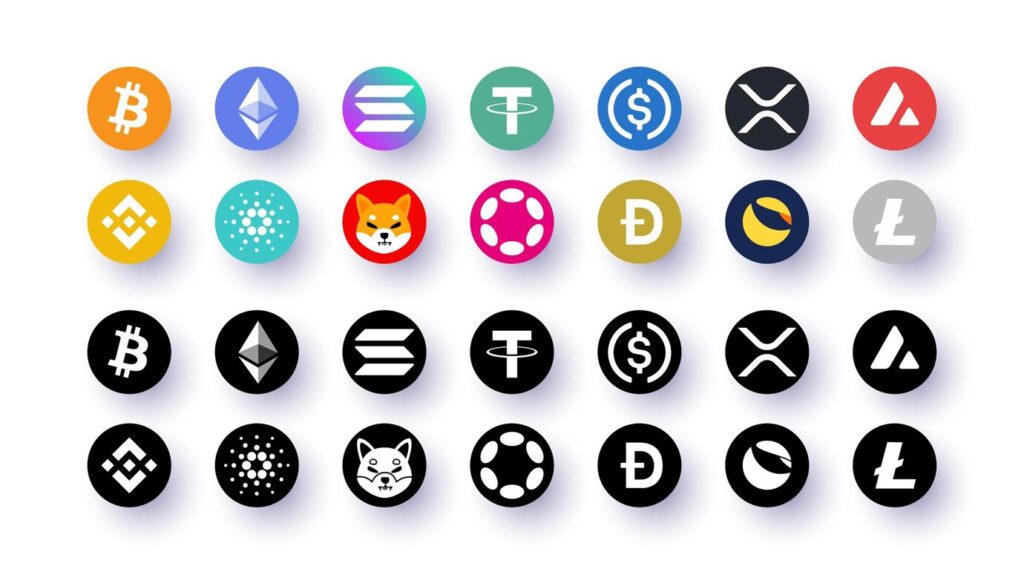The Rise of Flash Bitcoin and Crypto Flashing Software: A Deep Dive into the Crypto World
Crypto flashing software is used to send and receive cryptocurrencies temporarily, often for testing or demonstration purposes. It typically involves creating transactions that appear real but are not actually validated on the blockchain. Cryptocurrencies have revolutionized the financial landscape, offering decentralized and borderless transactions. This article explores these terms and their significance in the ever-evolving world of digital currencies.
Flash bitcoins refer to a method of temporarily transferring Bitcoin (BTC) in a way that appears valid but is not permanent. This concept is closely tied to the notion of “flashing,” where digital assets are moved between wallets or accounts, often for a limited time. The purpose of flashing can vary, from testing transaction speeds and security features to conducting illicit activities. Flash bitcoins are not a well-documented or officially recognized concept within the cryptocurrency community. Instead, they are often associated with gray areas and underground markets.
Flash Bitcoins: The Basics
The terms crypto flasher and crypto flash are closely related to flash bitcoins. A crypto flasher refers to a tool or software used to facilitate the flashing of cryptocurrencies. These tools can be employed for various purposes, including demonstrating the transfer of digital assets, testing blockchain networks, or, in some cases, engaging in fraudulent activities.

Crypto flash, on the other hand, can refer to both the process and the event of flashing cryptocurrencies. This can involve the temporary appearance of funds in a wallet, which might later disappear. The use of crypto flasher tools can be risky, as it often involves bypassing standard security measures and exploiting vulnerabilities in blockchain networks.
Flash Cryptocurrency: A Broad Term
Flash cryptocurrency is a broader term that encompasses any digital asset involved in the flashing process. It is not limited to Bitcoin but can include other cryptocurrencies like Ethereum, Litecoin, and more. The concept of flash cryptocurrency highlights the versatility of flashing, as it can be applied to various digital assets. However, it is essential to understand that flashing is not a legitimate or widely accepted practice in the cryptocurrency community. It often raises ethical and legal concerns, as it can be used for money laundering, fraud, or other illicit activities.
BTC USDT Flashing Software: A Specific Use Case
BTC USDT flashing software is a specific type of tool designed to facilitate the flashing of Bitcoin (BTC) and Tether (USDT), a stablecoin pegged to the US dollar. This software enables users to temporarily move these assets between wallets or accounts. The flashing of BTC and USDT can serve various purposes, including arbitrage, testing liquidity, or, in some cases, conducting fraudulent transactions.
The use of BTC USDT flashing software raises several concerns, especially regarding the legality and security of such activities. While some may use this software for legitimate purposes, others may exploit it for illegal transactions. It is crucial for users to exercise caution and ensure they operate within the bounds of the law when engaging with such software.
Blockchain Software: The Backbone of Cryptocurrencies
Blockchain software plays a pivotal role in the functioning of cryptocurrencies. It is the underlying technology that enables the secure and transparent transfer of digital assets. A blockchain is a distributed ledger that records all transactions across a network of computers. This technology ensures that transactions are immutable, secure, and transparent.
Blockchain software is not limited to cryptocurrencies; it has applications across various industries, including supply chain management, healthcare, finance, and more. It enables the creation of smart contracts, decentralized applications (dApps), and other blockchain-based solutions. The versatility and potential of blockchain technology make it a critical component of the digital economy.
The Risks and Challenges of Flashing
The practice of flashing cryptocurrencies, whether through flash bitcoins, crypto flashers, or BTC USDT flashing software, comes with significant risks and challenges. One of the primary concerns is security. Flashing often involves exploiting vulnerabilities in blockchain networks, which can compromise the security of digital assets. Additionally, the temporary nature of flashed transactions can lead to confusion and disputes, especially if funds are not returned as expected.
Another significant risk is the legal implications. The use of flashing software can be seen as an attempt to manipulate transactions, evade regulations, or conduct illicit activities. This can result in legal consequences, including fines, penalties, or even imprisonment. It is crucial for individuals and organizations to understand the legal landscape and ensure they comply with relevant laws and regulations.
The Future of Flashing and Blockchain Technology
As the cryptocurrency market continues to evolve, so does the technology and practices associated with it. The concept of flashing is likely to remain a controversial and debated topic. While some may view it as a tool for testing and experimentation, others may see it as a potential threat to the integrity of the blockchain ecosystem.
The future of flashing will largely depend on advancements in blockchain technology and regulatory frameworks. As blockchain networks become more secure and sophisticated, the opportunities for flashing may diminish. Additionally, stricter regulations and enforcement could deter individuals and organizations from engaging in such practices.
On the other hand, the broader field of blockchain technology is poised for continued growth and innovation. From decentralized finance (DeFi) to non-fungible tokens (NFTs), blockchain is revolutionizing various sectors. The development of more secure and efficient blockchain solutions will play a crucial role in shaping the future of digital currencies and the broader digital economy.
Flash Bitcoins Software: Understanding the Technology and Its Implications
The world of cryptocurrency has continuously evolved since Bitcoin’s inception in 2009. From being a niche digital currency discussed mainly within tech circles, Bitcoin has become a global phenomenon, influencing everything from finance to politics. With this rise in popularity, new technologies and tools related to Bitcoin have emerged, some of which have sparked significant debate due to their potential use for illegal activities. One such tool is Flash Bitcoins Software. This article delves into the concept of Flash Bitcoins, the software behind it, and its implications for the cryptocurrency ecosystem.
What is Flash Bitcoins Software?
Flash Bitcoins Software refers to a type of program designed to temporarily generate or send Bitcoins to a wallet address, which can appear legitimate within a specific timeframe. However, these transactions are not genuine and will eventually disappear from the blockchain after a set period, typically ranging from a few hours to several days. This software exploits vulnerabilities in the way Bitcoin transactions are initially broadcasted and confirmed, making it appear as though a Bitcoin transaction has taken place when, in reality, it hasn’t.
The term “flash” in Flash Bitcoins Software derives from the fleeting nature of the transaction—it’s there one moment and gone the next. While the concept might sound intriguing, it carries significant risks and ethical concerns.
How Does Flash Bitcoins Software Work?
To understand how Flash Bitcoins Software operates, it’s essential to grasp the basics of how Bitcoin transactions are processed. A Bitcoin transaction involves broadcasting a transaction to the network, where it is then validated and added to the blockchain by miners. This process can take some time, depending on network congestion and the transaction fee offered by the sender.
Flash Bitcoins Software takes advantage of the time gap between when a transaction is broadcasted and when it is confirmed on the blockchain. By creating a transaction that looks legitimate and is broadcasted across the network, the software can make it seem like the recipient has received Bitcoins. However, because the transaction isn’t confirmed on the blockchain, it will eventually disappear, leaving the recipient without any actual Bitcoin.
The software works by exploiting vulnerabilities in Bitcoin’s Double-Spending mechanism. Typically, when a Bitcoin transaction is broadcasted, it is first recorded in the mempool—a waiting area for transactions before they are confirmed by miners. Flash Bitcoins Software sends a transaction to the mempool without it being confirmed by the network. The transaction can be seen in the mempool, giving the appearance of a legitimate transfer, but it is never confirmed. As a result, the transaction eventually expires, and the Bitcoins vanish.
The Dangers and Risks of Flash Bitcoins Software
While Flash Bitcoins Software might seem like a clever tool, it carries numerous dangers and risks, both for individuals using the software and the broader cryptocurrency ecosystem.
1. Legal Implications: Flash Bitcoins Software is often used for fraudulent activities, such as scamming individuals or businesses into thinking they have received payment. This kind of activity is illegal and punishable by law in most jurisdictions. The use of such software for fraudulent purposes can lead to severe legal consequences, including fines and imprisonment.
2. Reputation Damage: The cryptocurrency community is built on trust and transparency. Using Flash Bitcoins Software undermines these principles and can damage the reputation of both the individual and the broader community. If cryptocurrencies are associated with fraud, it could lead to stricter regulations and decreased adoption.
3. Financial Losses: Those who use Flash Bitcoins Software or fall victim to it can suffer significant financial losses. For the user, the initial cost of obtaining or using the software may not be recouped, and for victims, believing they have received payment can result in providing goods or services without actual compensation.
4. Network Stability: The use of Flash Bitcoins Software can also threaten the stability of the Bitcoin network. By flooding the mempool with illegitimate transactions, the software can increase network congestion, leading to slower transaction times and higher fees for all users. This can reduce the efficiency of the network and lead to user frustration.
Ethical Concerns
Beyond the legal and financial risks, Flash Bitcoins Software raises significant ethical concerns. The development and use of such software directly conflict with the principles of decentralization, transparency, and fairness that are central to the cryptocurrency movement. While blockchain technology was designed to promote a trustless system, Flash Bitcoins Software introduces a layer of deception that undermines this trust.
The existence of such software highlights a broader issue within the cryptocurrency space—how to balance innovation with responsibility. As the technology continues to evolve, it’s crucial for developers, users, and regulators to work together to ensure that new tools and applications are used for legitimate and constructive purposes rather than for deception and fraud.
The Future of Flash Bitcoins Software
As awareness of Flash Bitcoins Software grows, there are ongoing efforts within the cryptocurrency community to address the issues it presents. Developers are continually working on improving the security and robustness of the Bitcoin network to prevent the exploitation of vulnerabilities that make such software possible.
One potential solution is the development of more efficient and secure transaction confirmation processes. For example, second-layer solutions like the Lightning Network aim to facilitate faster transactions that don’t rely on the traditional confirmation process, reducing the opportunity for exploits like those used by Flash Bitcoins Software.
Additionally, as regulatory scrutiny of the cryptocurrency space increases, it’s likely that the use of Flash Bitcoins Software will become more challenging. Governments and regulatory bodies around the world are developing frameworks to combat cryptocurrency-related fraud and protect consumers, which could lead to stricter penalties for those caught using or distributing such software.
Conclusion
Flash Bitcoins Software represents a dark side of cryptocurrency technology, exploiting vulnerabilities for fraudulent purposes. While the software itself might be technologically sophisticated, its use comes with significant legal, financial, and ethical risks. As the cryptocurrency ecosystem continues to evolve, it’s crucial for all stakeholders to remain vigilant against such threats and work towards creating a more secure and trustworthy environment for all users.
The future of cryptocurrencies depends on the collective efforts of the community to promote innovation while safeguarding the integrity of the network. Flash Bitcoins Software may be a part of the current landscape, but its use is neither sustainable nor ethical. The focus should instead be on developing and adopting tools that contribute positively to the growth and stability of the cryptocurrency world.
